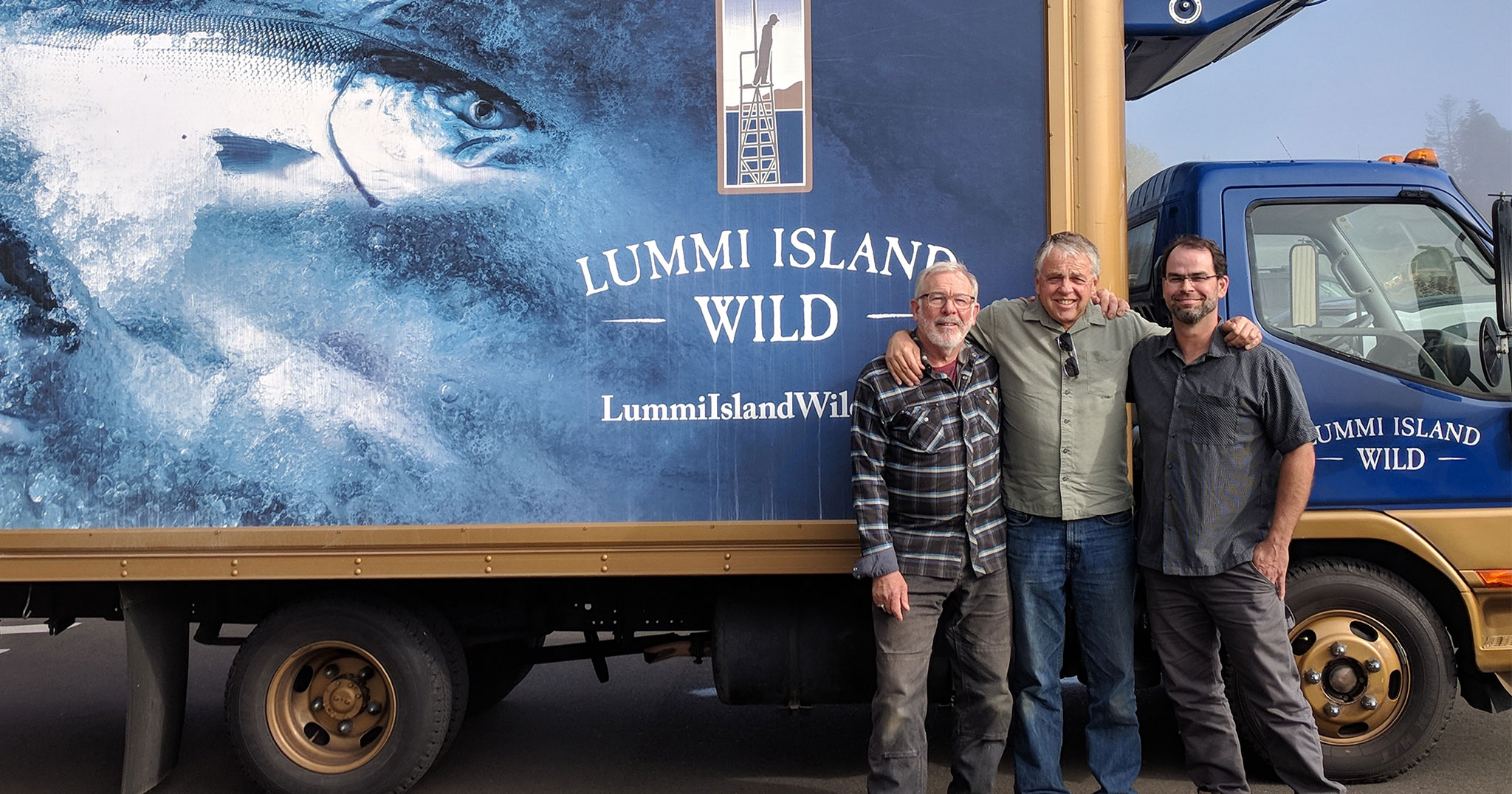Lummi Island Wild Marketing Manager Riley Starks, President Keith Carpenter, and General Manager Ian Kirouac
Saving our oceans, one fish at a time
By Liz Hansen
November, 2018
Long, long ago, in the Salish Sea, the Lummi people devised ingenious methods to harvest wild salmon. Their methods were meant not only to respected the sacred fish, but to ensure the salmon’s return for many generations to come. Today, Lummi Island Wild uses the exact same ancient practices to harvest salmon from the Salish Sea, but with a slightly modern twist. The practice is called reef netting, and it’s the most sustainable fishing practice in the world.
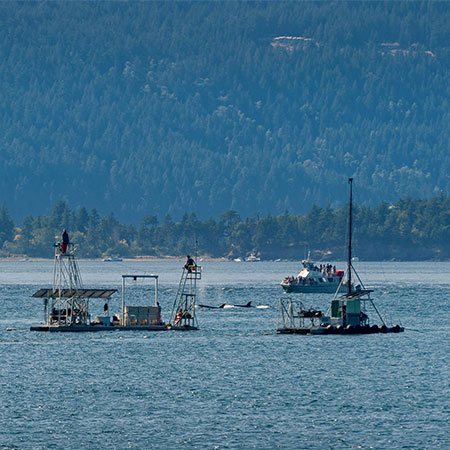
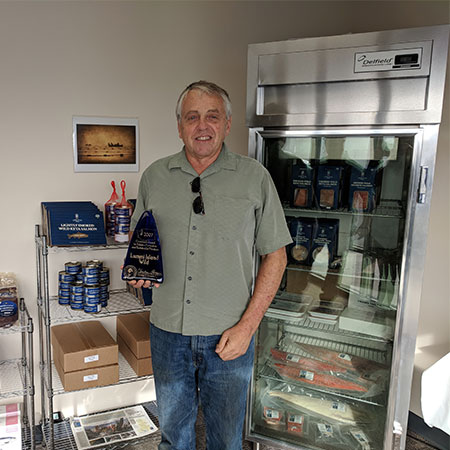
Lummi Island Wild reefneeting and being visited by a pod of orcas! And Owner, Keith Carpenter, holding the WA Governor’s Award for Pollution Prevention and Sustainable Practices.
Increased technological advances in the fishing industry have made bringing fish from ocean to market easier and faster than ever. But, for many species, the quantities of fish being removed are much higher than the rates at which the oceans can replenish them. In addition, some fishing practices can wreak havoc on marine ecosystems, and as consumers, this puts us in a difficult position, forcing us to choose between the health of the planet and our own health. Lummi Island Wild helps eliminate this painstaking choice, and brings to market a product that is like nothing you’ve ever tasted before. And the reason is because of their special approach to harvest and processing.
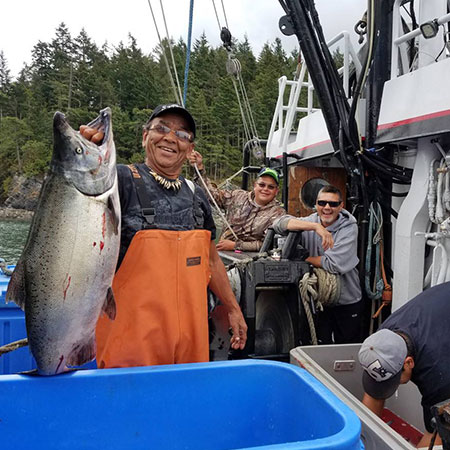
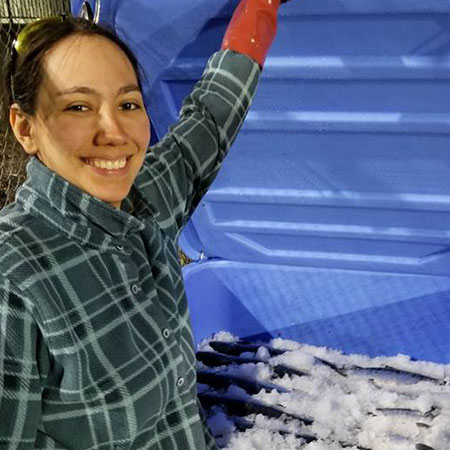
The awesome seiner crew of F/V Tah-Mahs and Arianna Fernando, who layers her fresh Baker Lake Sockeye in an iced tote like cordwood. Quality is important to their crews and they take pride in their fisheries!
Every step and process is completed with a gentle touch and strictly by hand: from pulling in the nets, to returning the unintended species back to the water alive and well, to processing and packaging. Lummi Island Wild bleeds each fish, which is one of the most humane ways of killing, and keeps the quality and taste of the end product top notch for two reasons. First, the bitterness caused by lactic acid, which builds up in the muscle tissues when a fish struggles, dissipates, since the salmon is allowed to relax both before and after bleeding. Second, the blood is not there to cause a metallic, often slightly bitter and rancid flavor associated with the term “fishy.” This clean flavor is noticeable immediately, but becomes even more obvious after the salmon is frozen or smoked. The careful handling after bleeding ensures that each salmon is treated with respect all along the processing chain, resulting in the best product possible. Every chef will tell you, this is the kind of seafood to eat!
They offer far more than just salmon though. You might also want to try some of Lummi Island Wild’s Salish Sea halibut. What’s that? You didn’t know the Salish Sea has its own unique species of halibut that prefers not to migrate but spend their time gorging on local spot prawns and crabs instead? Due to fishing gear restrictions, Lummi Island Wild is one of the only distributors of Salish Sea halibut. They also offer sustainable tuna, black cod, and spotted prawns!
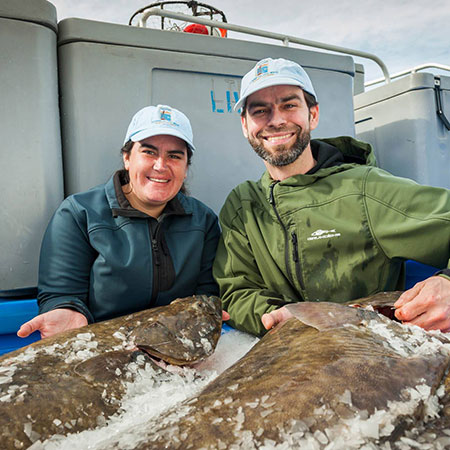
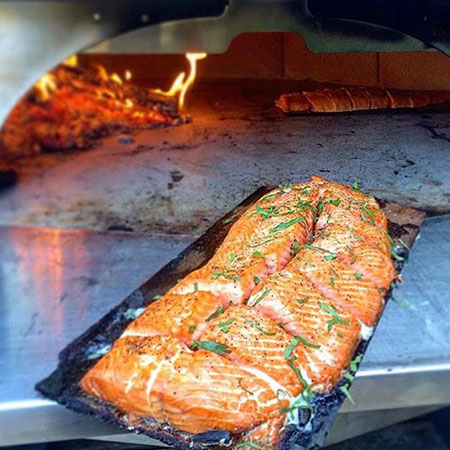
Salish Sea Halibut and some delicious Lummi Island Wild Salmon ready to eat!
Lummi Island Wild is also easy to find. They sell their product all over the county through local grocers like Haggens and the Community Food Co-op. They also have a distribution center located off Marine Drive, and you can sign up for their newsletter to stay in the know about any upcoming sales. They’ve also partnered with Patagonia. That’s right. Patagonia. Lummi Island Wild’s practices are so stellar, Patagonia wants to share them with the world. Need we say more?
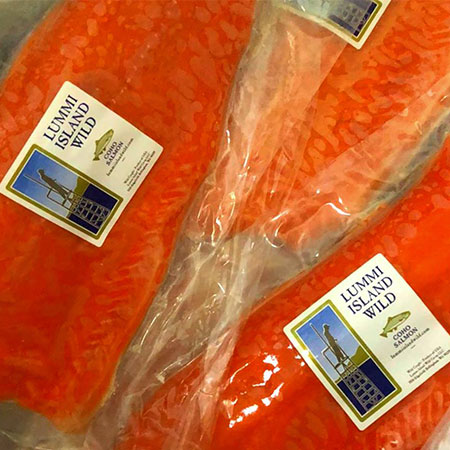
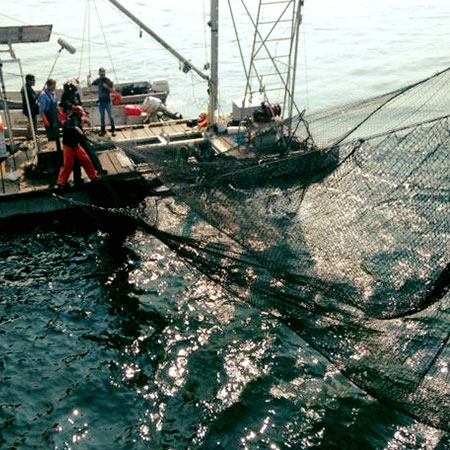
Yes. Because if that wasn’t enough to persuade your palate and ease your inner environmentalist, the sockeye this year are to die for! Due to a global warming glitch and disruption in their lifecycle, sockeye have been M.I.A. for the last 3 years, resulting in an extra abundant food supply for this season’s stock. It’s typical for sockeye to have a fatty profile of 13%, give or take. This year the sockeye’s fat content is 28%! Lummi Island Wild predicts they’ll run out before January, so stock up while you can.
Now go find out how amazing sustainable fish really tastes–it’s the perfect main course for a PNW Thanksgiving! And, while it just might change your life, it will definitely boost your Omega 3s.

